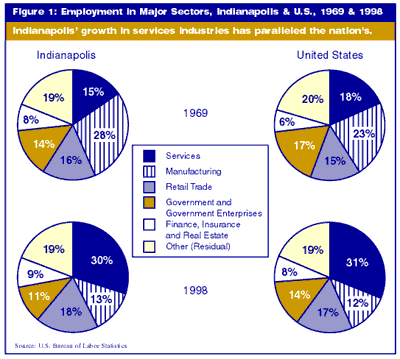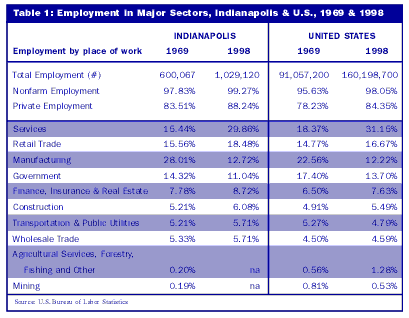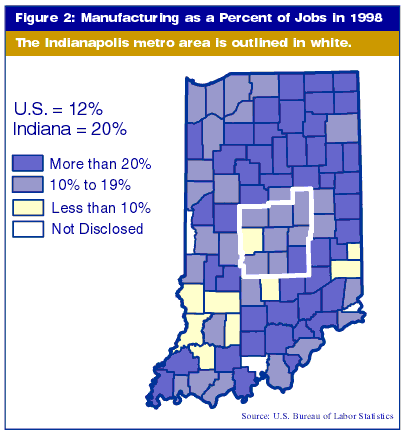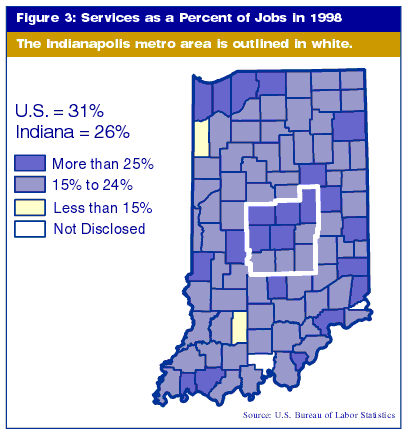Indy Metro Area: Where the Jobs Were, Where the Jobs Are Now
As jobs in service industries expanded their share of national employment, the high concentration of manufacturing jobs in the Indianapolis metro area shrank.
Manufacturing jobs accounted for 28% of the Indianapolis metro area employment in 1969, compared to 23% nationally (see Figure 1). By 1998, manufacturing had fallen to 13% in Indianapolis and 12% in the United States. Over the same period, service-sector employment doubled its share in the Indianapolis metro area, to 30% of all nonfarm jobs.

Table 1 compares the major job sectors in Indiana and the United States over time by proportion of total nonfarm employment.

The share of jobs in manufacturing throughout the state in 1998, the most recent year for which data are available, is displayed on the map in Figure 2.
Click on map to see larger version with data.

Service-sector earnings in Indiana have more than doubled since 1969 — increasing from 12% of nonfarm earnings to 25% in 1998. Nationally, the service-sector share increased from 15% to 31% within the same period of time. Figure 3 shows the proportion of current nonfarm employment in the service sector for each Indiana county.
Click on map to see larger version with data.

Making things, selling things and doing things constituted about 70% of the jobs nationally and in the Indianapolis metro area in 1998. Manufacturing (making) accounted for $7.5 billion in earnings; finance, insurance and real estate and retail trade (selling) generated earnings of $6.7 billion; and the services sector (doing) generated $8.7 billion in 1998 (the latest year for which these data are available).
The services sector is projected to grow even more over the next 10 years. National projections from the U.S. Bureau of Labor Statistics show that industries with the fastest wage and salary growth between 1998 and 2008 should include: computer and data processing services (117%); health services (67%); residential care (57%); management and public relations (45%); and security and commodity brokers (40%).
